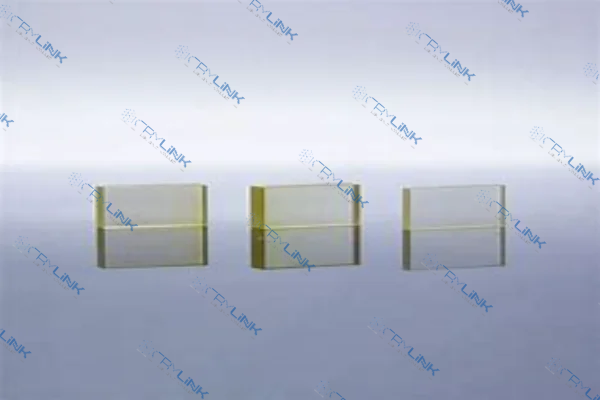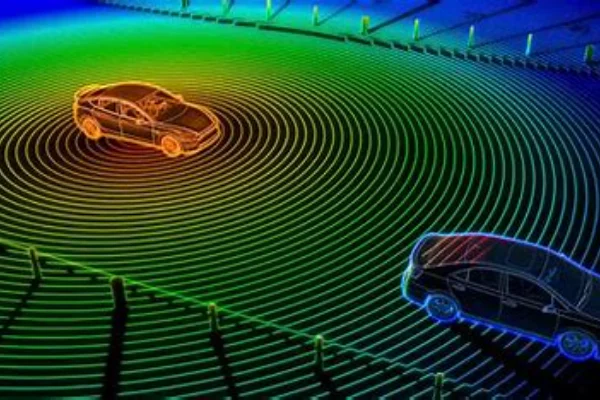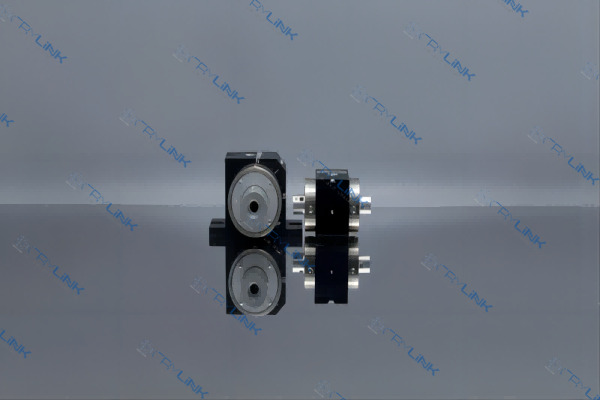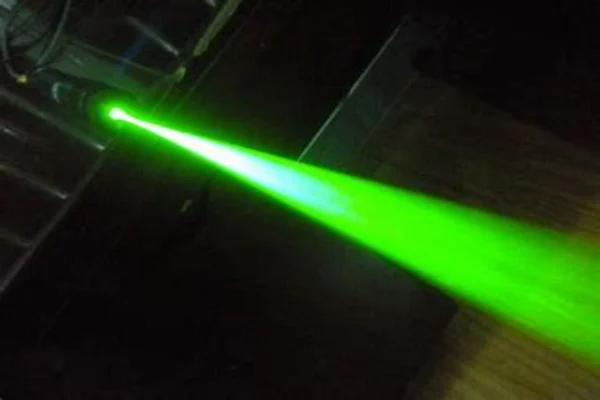Introduction
In the domain of optoelectronics, magneto-optic crystals have emerged as powerful tools, offering unprecedented control over light’s interaction with magnetic fields. The ability to manipulate light’s polarization direction and intensity opens the door to myriad applications, such as optical isolators, circulators, and other magneto-optic devices.
The Science of Magneto-Optic Crystals: An In-depth Examination
Magneto-optic crystals are distinct elements that hold the key to unlocking powerful possibilities in the realm of optoelectronics. As their name suggests, these crystals employ the magneto-optic effect, which describes how light interacts with a magnetized medium. The foundational principle in magneto-optic crystal technology is Faraday rotation, a phenomenon that alters the direction of light’s polarization when it journeys through a magnetic field.
Faraday rotation was first observed and reported by Sir Michael Faraday in 1845, marking a monumental stride forward in our understanding of electromagnetic phenomena. According to Faraday’s discovery, as a linearly polarized light beam makes its way through a magneto-optic crystal under the influence of a magnetic field, the plane of polarization experiences rotation. This rotation does not occur randomly, but rather, it bears a direct relationship with the strength of the applied magnetic field and the path length the light beam traverses within the crystal. This relationship indicates that by manipulating the magnetic field and optical path length, we gain substantial control over light’s behavior. This level of control sets the stage for a wide range of optical applications, such as optical isolators and circulators, data storage devices, and quantum information systems.
At the heart of Faraday rotation is the Verdet constant. The Verdet constant is a material-specific parameter that quantifies the degree of rotation a polarized light beam experiences in a magnetic field. It is essential to note that materials with higher Verdet constants will induce a more significant rotation under the same magnetic field strength and optical path length. As such, this characteristic serves as a critical factor in the selection of magneto-optic crystals for various applications. For instance, Terbium Gallium Garnet (TGG) has one of the highest Verdet constants among magneto-optic crystals, making it a popular choice for high-power applications.
In essence, the magneto-optic effect, Faraday rotation, and the Verdet constant are interlocking gears in the dynamic machinery of magneto-optic crystals. Through understanding and harnessing these principles, we can engineer materials and devices that provide unprecedented control over light. Whether it is for data transmission, quantum computing, or advanced imaging techniques, the science of magneto-optic crystals can pave the way for next-generation technologies. This burgeoning field of study remains an exciting frontier for researchers and engineers, promising to reveal more possibilities as we delve deeper into the manipulation of light’s interaction with magnetic fields.

Magneto-Optic Crystals: Key Types and Their Characteristics
When it comes to the world of magneto-optic crystals, there is a wide array of types to consider, each with its own unique set of properties and attributes. The Verdet constants and optical properties differ substantially among these crystal types, thereby allowing engineers and researchers to select the most suitable crystal based on their specific application requirements.
One of the most noteworthy types of magneto-optic crystals is Terbium Gallium Garnet, commonly referred to as TGG. TGG stands out due to its high Verdet constant, one of the highest among magneto-optic crystals, enabling it to exhibit a substantial Faraday rotation under a given magnetic field strength and optical path length. TGG is an optically isotropic crystal, which means its properties remain the same regardless of the direction of the incident light. This isotropic characteristic, coupled with its excellent thermal stability and high laser damage threshold, makes TGG an ideal candidate for high-power applications. These high-power applications can range from laser systems in industrial processes and scientific research to advanced optical communications.
Yet, the world of magneto-optic crystals extends far beyond TGG. Yttrium Iron Garnet, or YIG, is another critical player in this field. YIG is a ferrimagnetic material that boasts a high Verdet constant, much like TGG. However, what sets YIG apart is its low optical loss characteristic, which is particularly beneficial in applications requiring minimal light attenuation. Furthermore, YIG excels in its performance at microwave frequencies, thus making it an excellent choice for microwave photonics. The role of YIG in microwave photonics can involve applications such as microwave filters, oscillators, and isolators, contributing to various telecommunications and radar systems.
Last but certainly not least, there’s Bismuth Iron Garnet (BIG), another type of magneto-optic crystal that deserves our attention. BIG crystals are renowned for their high magneto-optic sensitivity and pronounced Faraday rotation. This sensitivity makes BIG crystals particularly advantageous for optical isolators used in telecommunications and other optical devices. Optical isolators are crucial components in fiber optic communications, protecting laser sources from disruptive or damaging optical reflections.
In summary, the landscape of magneto-optic crystals is diverse and multifaceted, encompassing TGG, YIG, BIG, and many other types. Each crystal type brings unique properties to the table, offering specific advantages for various applications. As such, the selection of magneto-optic crystals is a vital process that requires a thorough understanding of each crystal’s characteristics and the demands of the intended application. As we continue to push the boundaries of optoelectronic technologies, the importance and relevance of these remarkable materials are poised to grow.

Magneto-Optic Devices: Applications and Impact
The wonders of magneto-optic crystals extend beyond their fascinating properties and characteristics. Indeed, these crystals are the backbone of several cutting-edge devices that harness the magneto-optic effect, thereby revolutionizing a broad spectrum of fields.
Optical isolators are one of the paramount devices that take advantage of magneto-optic crystals. These devices are crucial for preventing damaging back-reflections in optical systems. Back-reflections can degrade system performance, cause instabilities, and even damage the laser source. To prevent this, optical isolators utilize the principle of Faraday rotation to allow light to pass in only one direction. By incorporating a magneto-optic crystal, such as TGG or BIG, and an appropriate polarizer, the optical isolator ensures that any reflected light undergoes polarization rotation and is subsequently blocked by the polarizer. Consequently, optical isolators maintain system integrity and reliability in fiber-optic communications, laser systems, and various optoelectronic devices.

Similarly, magneto-optic crystals play an essential role in the operation of optical circulators. These devices direct light from one port to another in a sequential manner, facilitating unidirectional signal routing. This operation is crucial in systems where it is necessary to separate forward-traveling signals from backward-traveling ones. For instance, in an optical fiber network, a circulator can send incoming signals to the intended receiver while routing any reflected signals to a separate port, thereby protecting the transmitter. Optical circulators find extensive use in optical networking and sensing, and their operation leverages the Faraday rotation principle facilitated by magneto-optic crystals.
Then, we have magneto-optic modulators. These devices offer a means to alter the polarization state of light and control its intensity, essentially modulating the light beam. They function by using the magneto-optic effect to induce a rotation in the polarization plane of the incident light. The amount of rotation depends on the magnetic field applied to the magneto-optic crystal within the modulator. By adjusting this magnetic field, it is possible to precisely control the light’s polarization and intensity. This control proves integral to advanced laser systems, optical communication networks, and various scientific research applications.
In conclusion, the applications and impact of magneto-optic crystals reach far and wide. Through devices like optical isolators, optical circulators, and magneto-optic modulators, we are able to harness light’s interaction with magnetic fields to drive technological progress in various domains. From ensuring reliable communication in fiber-optic networks to enabling advanced laser operations, the influence of these remarkable crystals is undeniably profound. As we forge ahead, it is thrilling to imagine what further possibilities await us in the realm of magneto-optic technology.

The Future of Magneto-Optic Crystals
With the dawn of quantum computing and the ever-increasing demand for high-speed optical communications, the importance of magneto-optic crystals is set to rise. Their unique ability to manipulate light holds the promise for even more innovative devices and technologies.

Conclusion
Magneto-optic crystals represent a perfect intersection of optics and magnetism. Through the prism of Faraday rotation, these crystals control light with unprecedented precision. As we delve deeper into the realm of quantum technologies and high-speed optical communications, these extraordinary materials are bound to play an even more central role.
FAQ
- Q1: What is the magneto-optic effect?
The magneto-optic effect refers to the alteration of light’s properties, especially its polarization direction, when it passes through a magnetized medium. - Q2: What is Faraday rotation?
Faraday rotation is the phenomenon of the rotation of the plane of polarization of a linearly polarized light beam when it travels through a magneto-optic crystal under the influence of a magnetic field. - Q3: What is the Verdet constant?
The Verdet constant is a parameter that quantifies the degree of Faraday rotation in a material. Materials with higher Verdet constants exhibit greater rotations at the same magnetic field strength and optical path length. - Q4: What are the applications of magneto-optic crystals?
Magneto-optic crystals are used in a variety of applications, including optical isolators, optical circulators, and magneto-optic modulators. - Q5: What is the future of magneto-optic crystals?
With advancements in quantum computing and the increasing demand for high-speed optical communications, magneto-optic crystals are anticipated to play a pivotal role in future technological developments.

Frank
Frank graduated from the University of Shanghai for Science and Technology, majoring in optics. As a technical engineer at Crylink Company, he deeply understands crystal materials and laser components.
Related Video(s) with this Article
Related Product(s) with this Article
Related Application(s) with this Article
